If you want to have a good idea, start by having lots of ideas. And if you want to have lots of ideas, start by exploring the world around – again. With a fresh set of eyes. Unplug from the computer!
I wrote this article for myself with the intent to create a checklist of sources and places to find inspiration when looking to generate ideas at the start of a project or when stuck. There are others around, but I found them all to be pretty average and basically just clickbait.
I wanted something that was honestly helpful. It’s part way there (actually only partway finished…). Something I could refer to at the start of each new project. The article is a work in progress but a pretty good starting point.
There is plenty of overlap between research for creative purposes, such as inspiration and new ideas and traditional market research, which is focused on understanding customers and developing insight for a marketing strategy.
The intent of this article is not to be about market research.
I feel that research for creative ideas is a little bit more… Out there. Being divergent and going off-tangent can yield unexpected results and unexpected ideas. It sure is a whole lot more fun.
Not that there is not a serious side to it. Qualitative and Quantitative market research is still essential to ground your “thinking” and provide direction to creative endeavours. Serious thinking leads to sensible outcomes (and who wants that).
Observations and the outcomes of the journey can be written, photographed, videoed or drawn as part of a journal.
An important point to note is the difference between exploring for creative inspiration, “idea generation”, and copying. If you have a specific project, say packaging, then diving straight into reviewing all of your competitors and their designs will have a significant impact on the ideas that ultimately remain in your subconscious. The chances of generating something unique will be lower.
So start by exploring the wider world, and collect inspiration and ideas that have a greater chance of being outside the norm of the category first.
Primary Sources / Factual
Past Knowledge – Start by writing down what you think you know – and then move on quickly!
Observations – In man-made and natural environments.
Conversations – It can be surprising what comes out is unscripted casual conversations with people.
Data Collection – Collect/generate a simple collection of data based on your observations. See if it changes your perspective and underlying assumptions.
Focus Groups – This could be done seriously or outsourced, but it might also be a smaller group done in a more casual fashion. This will be a bit more work, so it might not be applicable to smaller projects.
Surveys – Like above. It could be done seriously or filled with slightly crazy questions to help generate unique answers.
Ethnographic – Nothing is better than getting out and immersing yourself in relevant environments.
Customer Journey Analysis – Many of the above can help provide pieces of a puzzle that can be put together as a journey/story related to key customers or individuals.
Secondary Sources / Factual
Museums and Art Galleries – Explore and Enjoy. Let the mind wander.
Newspapers, Archives and Journals – So dry but also so much information.
Books – You could explore forever online, but I prefer to wander through an actual bookshop. There are a few left.
Surveys – Information sources such as ABS have a ridiculous amount of data. Be careful it does not kill the creative juices.
Lectures and Interviews – Online or in person. Sit down, shut up, listen and learn.
Online Video – For every one thousand cat videos, there can be a hidden gem – if you persist.
Podcasts – Not so useful for visual creative ideas, but there is no shortage of wonderful podcasts about every topic.
Google It – Choose your keywords wisely (or not) and spend as much time as you have going down rabbit holes.
Customer/User Segmentation Reports – Demographics/Geography/Psychographics/Behavioural – Fortunately, numerous market data companies have generated some wonderful population segmentation reports. Much can be learned for free with a bit of digging.
Primary Sources / Creative
Photography
Drawings
Video Records
Audio Recordings
Exploration of Man-Made objects
Natural environment.
Secondary Sources / Creative
Exhibitions
Images from books, magazines, posters and online
Work by other designers
Diagrams
Ephemera
Images from movies, videos and performances.
Architecture
Instagram and Pinterest
What else can help?
Go for a long walk. Not intense exercise as the exercise itself tends to become the focal point. But a gentle walk allows the body to be on autopilot, and the mind can wander.
Cooking. Another low involvement activity.
Gardening. There is something about the fresh air, dirt and being surrounded by plants that can help give you time to think.
Road Trips. I love to drive. No music, just hours of road and plenty of time to think and explore ideas.
But that is just me. Discover your own zones for thinking.
The Ideas Safari
What I have been trying to do lately is create a Safari. It’s probably more like a guided tour, but Safari sounds better. The idea is simple. I print out a list of all of the items above and then quickly run through the list and decide which are relevant to the project and which are not. I then make some comments to help focus my journey.
Ultimately I will come up with a rough itinerary. I then book in several time slots to conduct my Safari.
The results can then be collated in a journal.
Easy Peasy

